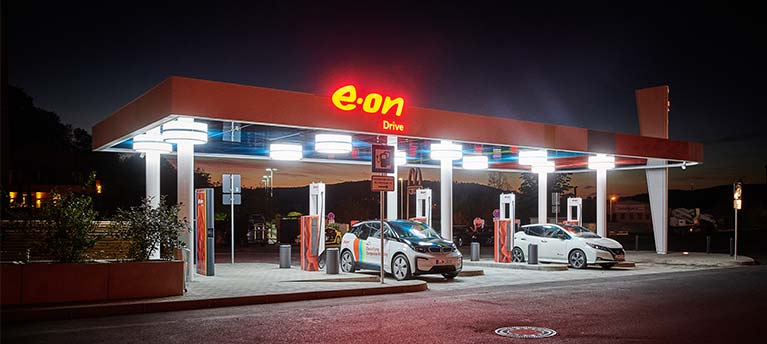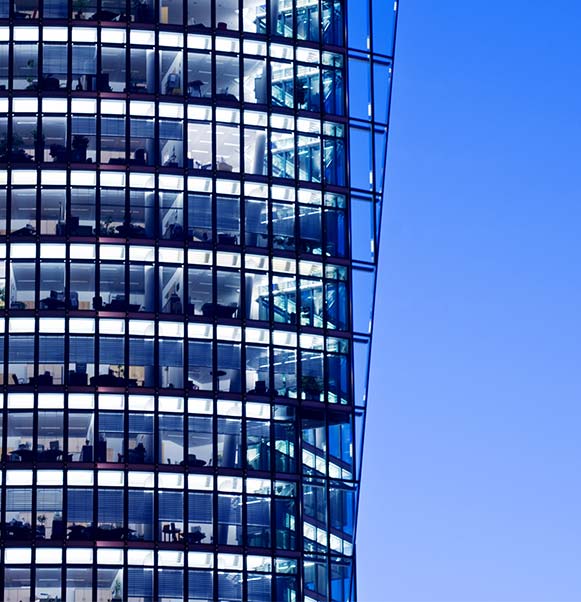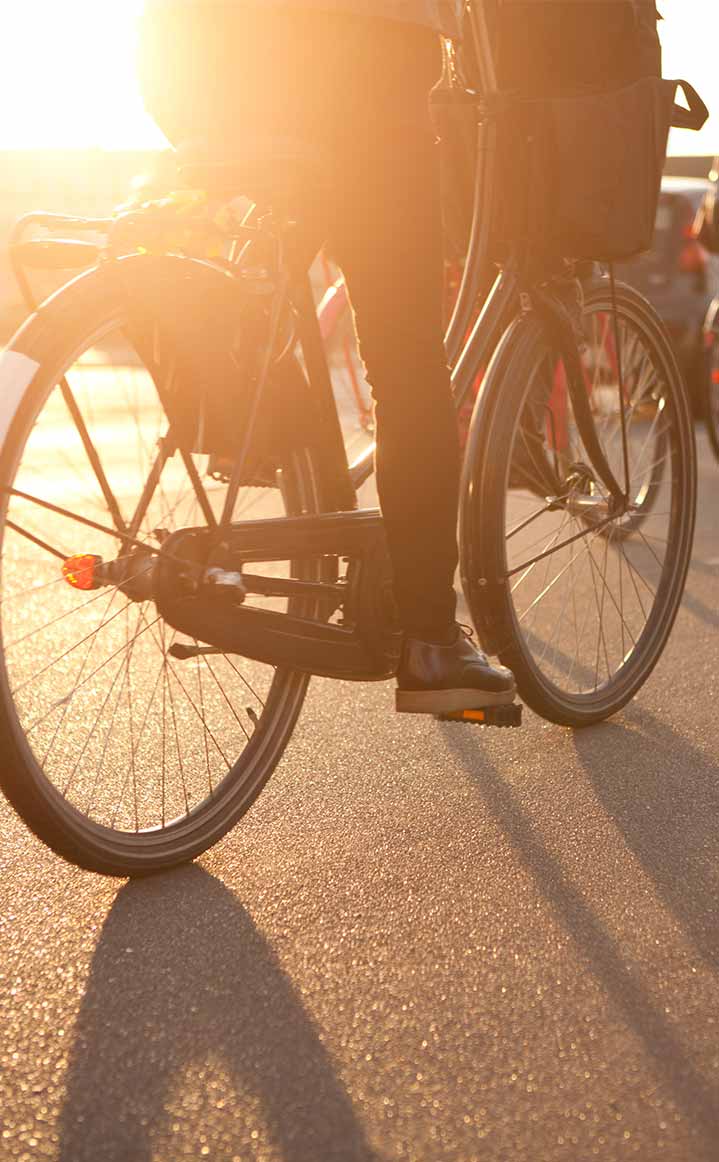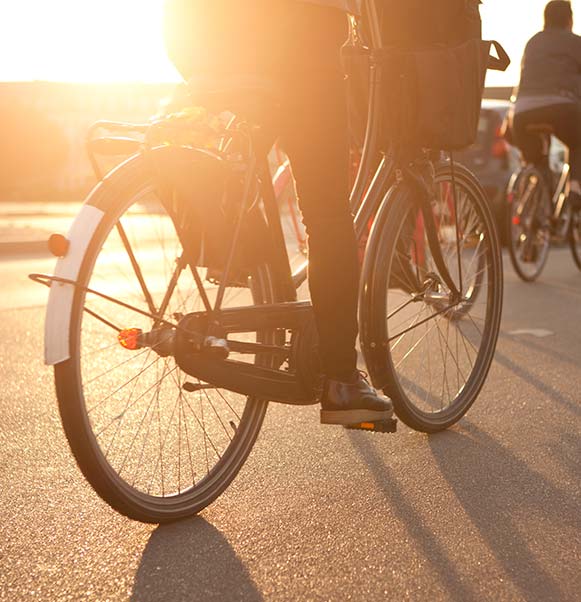

Solutions for our transport network
The transport sector is a major contributor to poor air quality.
More than half of NOx emissions in the UK come from transport25, mainly road traffic exhausts, and around a fifth of Fine particulate matter (PM2.5) is transport derived.26
The Committee on the Medical Effects of Air Pollutants estimates 29,000 ‘equivalent’ deaths each year are related to exposure to PM2.5 in the UK – a figure this increases to 40,000 when considering the related effects of NO2 (RCP 2016).27
Between 1990 and 2016, emissions fell continuously across the European Economic Area 28;
In the past three decades, there has been progress in reducing transport related air pollutants, but more work needs to be done.
Fundamentally addressing the challenge of transport pollutants will require a range of solutions.
First, we need to do more to enable people to avoid the need to travel in the first place but, where it is unavoidable, inform people on how they can avoid key areas during peak periods. Fewer vehicles on the road will produce lower emissions, partly as a result of easing congestion levels, which will help reduce the direct emissions from a vehicle.
Secondly, a shift will be required towards more sustainable modes of transport – moving people out of cars where feasible with much more focus on walking, cycling and public transport.
The third area is to improve the environmental performance of the vehicles on the road, so they emit much lower levels of pollutants into the atmosphere.
Transport pollutants are down
Source EEA 28
-
Nitrogen Oxide (NOx) down41%
-
Sulpher Oxides (SOx) down63%
-
Carbon Monoxide (CO) down86%
-
Non methane volatile organic compounds (NMVOCs) down87%
-
Particulate matter 2.5 down40%
Scandinavian cycle lanes
The cleanest form of travel is walking or pedal power. Although great progress has been made with the cycle super highway in London, the UK has traditionally lagged behind its European neighbours in promoting cycle travel and there is scope for considerable improvements to be made. In Copenhagen, for example, urban roads are commonly designed with three lanes: for motor vehicles, pedestrians, and a raised or demarcated cycle lane. It is possible to travel from the scenic Nyhavn port to Hellerup in the north of the city entirely on cycle lanes. Copenhagen’s wider transport network supports bikes too: commuter trains operate special cycle-friendly carriages.
Taking a bike on the Copenhagen underground is encouraged during normal hours, and is inexpensive. Similar approaches are taken across Scandinavia, creating a bicycle-first culture for families and commuters, even in inclement winter months.
Journeys by bicycle
Source CMTAS 2016 29
-
Copenhagen30%
-
Odense27%
-
Amsterdam22%
-
Berlin13%
-
Paris3%
-
London2%
-
Warsaw1%
-
Madrid0%
Electrify the trains
According to the Institution of Mechanical Engineers, the UK’s share of electrified railways is 42%.30 The rest of the fleet predominantly runs on diesel. The UK government has a goal of removing diesel trains by 2040 and yet in 2017 cancelled a number of electrification programmes.31
The cost of converting to electric trains is low by transport standards. The electrification of the 2,250 single track East Coast Main Line cost £671m (adjusted for 2018 values) over seven years. The result was a faster, cleaner, and more popular service: passenger revenues rose by 30%.32
A recent report by the Railway Industry Association suggests electrification can be done for 33-55% lower cost compared to previous upgrades.33 There is also the potential to replace diesel with hydrogen in certain rural routes, according to the Institution of Mechanical Engineers.34
To promote cleaner air, and improve the rail service for all users, a commitment to re-engage with electrification is the only logical move, allowing passengers to reach their destination far more quickly.
Promote electric vehicles
Promoting a switch to low-emission vehicles will reduce both carbon and air pollutant emissions from the transport sector. We anticipate there will be exponential growth in battery electric vehicles and hybrids over the next few years, provided that the Government continues to nurture this emerging technology until the capital cost of these vehicles is comparable with their petrol or diesel equivalent and that a viable second hand market grows to support demand for used electric vehicles.
This is expected to be realised by the middle of the next decade.35 However, consumer adoption of this new technology is sensitive to the incentives available today, given the current price premium. For example, the sales of new hybrid vehicles halved in June 2019 compared to June of the year before,36 which has been attributed to the premature withdrawal of a £2,500 subsidy. Ongoing state support for EVs will provide greater reassurance to purchasers.
Furthermore, there should be provisions to ensure all new homes are built with smart charging units as standard, with no exemptions. Interoperability between ‘rival’ charging networks is essential to make the transition simple for customers and a public campaign to educate the public about the return on investment with an EV would pay dividends.
Norway has shown how a supportive fiscal regime can help significantly drive demand for electric vehicles. Almost half of new cars sold in the first six months of 2019 were fully electric, up from a quarter in the same period the year before. Norway will prohibit the sale of all petrol and diesel vehicles by 2025 and is successfully using tax incentives to promote the switch.37
Closer to home, regional leaders including mayors and city leaders38 have backed calls to phase out the sale of new diesel and petrol cars and vans by 2030, rather than the current national target of 2040. Bringing forward the date to 2030 is perfectly feasible from an energy systems perspective, given how the system is becoming smarter and more flexible.39
Faster charging installations will need to be supported by on-site generation and large-scale battery storage so the demand from customers can be reliably met without impacting the efficient operation of the energy system. The approach will also involve increasing the availability of charge points so the public has confidence they will be able to access them.
This is a confidence factor that exists despite the relatively short distance of most journeys. There will be a role for strategic national charging infrastructure but this does not mean all installations have to be ultra-fast charging. A mixed approach will be required, including the ability to charge at work during the day and at key destination points such as car parks and shopping centres.
Meeting the growing demand will therefore require the engagement of various stakeholders including local authorities, universities, NHS Trusts and, from a business perspective, property owners, landlords, fleet managers and developers.
During times of peak power demand, electric vehicles will have the capability of feeding energy back into the grid. E.ON is working with Nissan 40 on a strategic project involving up to 1,000 EVs using bi-directional charging technology, installed at businesses across the UK.
Finally, there is the prospect of electric vehicles acting as a balancing element for the energy system.
Smart charging points will identify when to charge the batteries, and when to draw power from them, to smooth out demand.
The role of data analytics
The city of Boston, Massachusetts, wanted to encourage commuters to switch from cars to trains. In theory, the rail lines are conveniently located for a huge number of commuters – yet Bostonians seemed reluctant to embrace rail and free up the roads.41
A team set out to discover the reason using big data analytics, through a journey planning app installed on smartphones to collect anonymised data on the journey of each commuter. The data pointed to a clear problem between where commuters lived and their journeys to the rail station: a lack of viable transport options from home to station meant many potential rail commuters simply stuck to their cars. The Boston authorities could thus address the issue by commissioning more buses to the train station through the commuter belt.
Beyond Boston, big data analytics can be used to improve the attractiveness of public transport and improve the efficiency of the road fleet.Traffic control systems that are linked to air quality monitoring and forecasting could also be used to give priority to low-emission vehicles, vary speed limits and direct traffic away from congested and polluted areas. These could then be directly linked to smart apps to inform and help passengers take proactive action.
The associated reduction in braking, acceleration and stop–start driving will improve the emissions performance of those vehicles.
Suggested transport policies to help clear the air
Immediate focus on tackling roadside emissions
- Provide clean and affordable public transport so there is genuine choice which can help reduce the volume of traffic on roads.
- Use air quality monitoring data to create Clean Air Zones across the UK.
- Exemptions from Clean Air Zone charges should be limited to battery electric vehicles.
- Vehicle scrappage scheme should be targeted at the worst polluting vehicles with greater levels of financial support provided for battery electric vehicles.
- Incentivise ‘final mile’ delivery
Bring forward the ban on petrol and diesel vehicles to 2030
- Tighten emissions standards on manufacturers during the 2020s to significantly ramp up sales of battery electric vehicles.
- Consider placing volume obligations on vehicle manufacturers to support this ambition.
- All new homes should have smart charging units as standard with no exemptions.
- Deliver on interoperability so that customers can charge their vehicles at every public charging point on a pay-as-you-go basis.
Promote electric vehicle uptake
- Grant support to reduce the upfront cost of battery electric vehicles and home chargers should not be reduced any further until the forecourt costs of electric vehicles are comparable to petrol and diesel vehicles.
- To help enable low income households to buy low emissions vehicles, additional funding may be required to overcome those barriers.
- Fuel Excise Duty should be replaced with a tax regime that encourages fewer miles to be driven and the adoption of vehicles that have less of an impact on local air quality.
Increase the availability of second-hand electric vehicles
- Maintain the current levels of incentives to increase deployment of electric vehicles on company car fleets over the next five years, including favourable benefit in kind tax benefits for zero emission vehicles. This will help increase the future supply of the second-hand market.
- Clearly signal, through regulation, the requirement for businesses to provide workplace charging: this would allow the current tax incentives to be gradually phased out.
Innovation
- Set up an innovation fund to encourage new designs that reduce or eliminate the particulate matter which is created by brake dust and tyre wear.
- Accelerate the electrification of trains and investigate the potential role of hydrogen to replace diesel, as advocated by the Institution of Mechanical Engineers.
Share to


Take climate action
Find out how you can be more sustainable to help takle climate change.


The white paper - an introduction


The white paper - a foreword from the CEO


Solutions for homes


Solutions for workplaces

